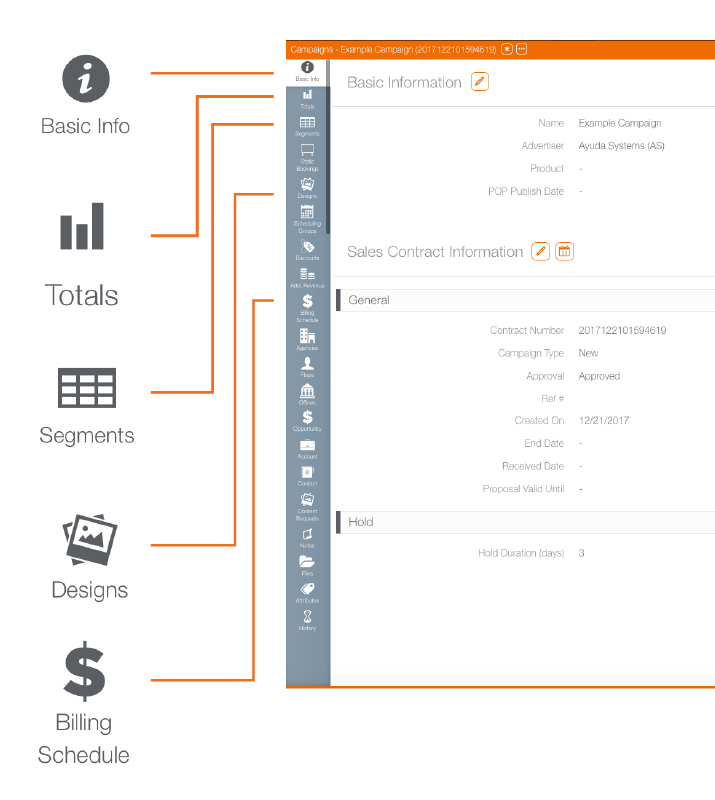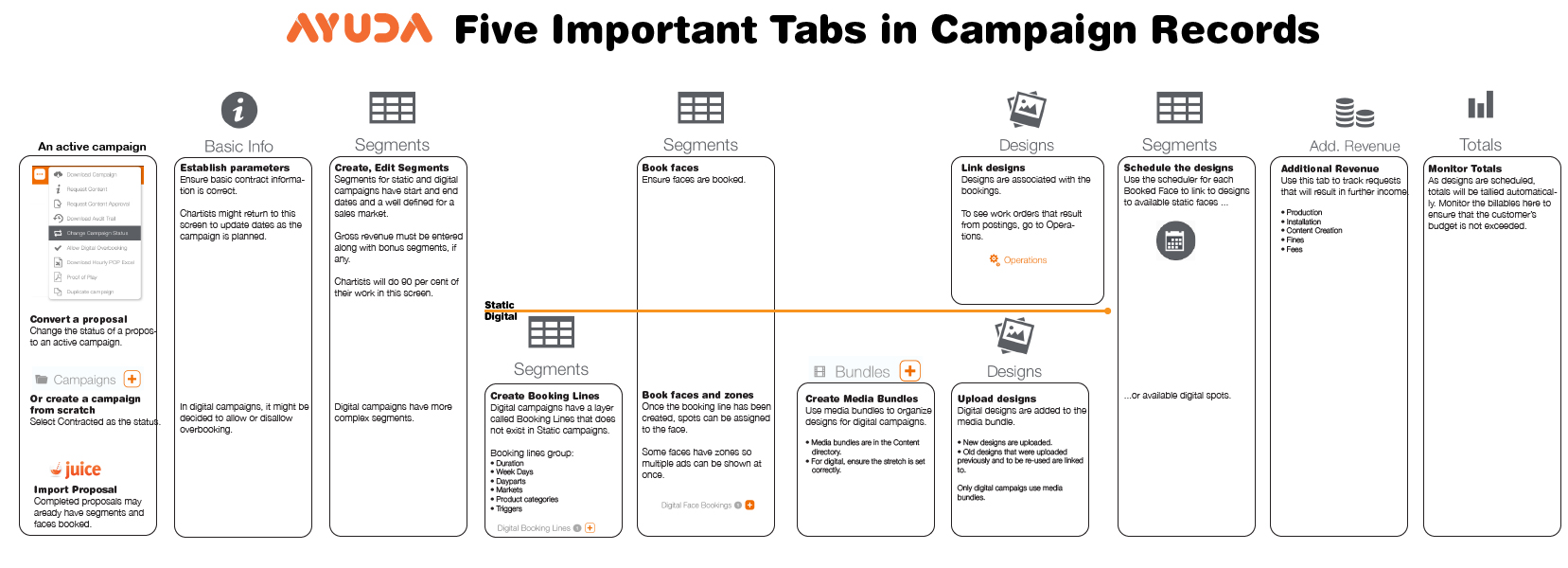Campaign records contain all of the materials and schedules in your campaigns.
There are 19 tabs in the record to help static chartists and digital schedulers drill into the information they need. However, five of them account for the bulk of their work.
(Download this attachment.)
| Tab | Description |
|
|
The core information for this campaign, including when it is to be run, its approval status and contract number. |
|
|
An at-a-glance scheduled and net billing report. |
|
|
The most important screen for campaign management. Digital segments are more complex. |
|
|
Manage designs associated with the campaign. |
|
|
View invoices for this campaign. |
(Download this attachment.)
The fundamental difference between static and digital is that with once physical media have been assigned to a location, the rest of the process is handed off to the operations team. The activities involved in deploying workers around the city to install the copy on billboards, busses and signs are not tracked in Broadsign Ayuda.
Digital is more hands on. There’s a level of information called a Booking Line that is used to further organize display ads by duration, week days, dayparts, markets or other means. Only then are faces booked, and zones within those faces, should these exist.
The designs are then uploaded and scheduled.
This image represents a straight through process. In the real world, there are many change requests during campaigns.


